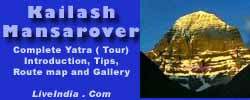Prof Agarwal continues
Save-Ganga fast in Delhi
22.Jun. 2008. Retired IIT
Kanpur Professor (retired) Dr GD Agarwal, 76 years, is sitting on a fast-unto-death
since 13 June 2008 to save the Ganga from the aggressive onslaught of strings
of dams and hydel projects in Uttarakhand. On 21 June 2008, the Uttarakhand
government had to forcibly disrupt the peaceful and non-violent agitation
of Prof Agarwal, forcing the unflinching crusader to move to the nation's
capital to continue his agitation.
The Chief Minister of Uttarakhand,
BC Khanduri, had said on 17 June 2008, that he was ready to stop the construction
of hydel projects on the Bhagirathi river if the power needs of the state
were fulfilled by the Centre. Possibly it was this assurance of Chief Minister
Khanduri that had instigated those with vested interest in hydel projects
to lobby against the growing influence of Prof Agarwal's non-violent protest.
The Uttarakhand state government
had earlier planned a series of hydel projects between Uttar kashi and
Gangotri. Khanduri, however, made it clear that the decision on stopping
the construction of the 600-MW Lohari Nagpala project would be taken by
the Centre since it was being constructed by National Thermal Power Corporation
(NTPC), a central government undertaking and India's largest power generation
company. Other major dams being built on the river include Pala Maneri
(480 MW), Bhairon Ghati (381 MW) and Jad Ganga (200 MW).
"The contentious issue
is 600 MW (4X150) Loharinag - Pala dam being built by National Thermal
Power Corporation (NTPC), a central government undertaking, the country's
largest power generation company. Ganga will be put into 26 and 17 km long
tunnels leading to its disappearance from its natural course through the
stretch. The construction is going on in full steam. The resultant destruction
of the fragile and unique ecosystem will have far reaching consequences.
Not only this, all this is done in earthquake zone 5 and terrain full of
sedimentary rocks. No imagination is required to realize what one earthquake
would to the entire region. Siltation is another problem. Ganga and all
other Himalayan rivers carry lots of silt along which will now settle in
the reservoirs created by the dams reducing the electricity generation
capacity. Repeated closing of Nathpa-Jhakri Dam on Satluj in Himachal Pradesh
4 years after its commission is a fine example" explained Environmental
scientist Neeraj Doshi, who has moved back from USA recently to strengthen
people's movements.
"In the name of 'development'
and 'economic growth' in India, rural and urban poor have been the worst
hit, facing displacement and dispossession at an unprecedented scale" said
Dr Sandeep Pandey, Ramon Magsaysay Awardee (2002) and convener of National
Alliance of People's Movements (NAPM). "Not only the state has overlooked
the environmental cost of such hydel projects, but also the issues of livelihood
and quality of life of those living in areas adjoining the Ganga and those
who will be displaced by these projects has been appallingly ignored by
the state" added Dr Pandey while strongly endorsing the fast of Dr Agarwal.
The privatization of water,
use of agriculture lands as special economic zone for rapid industrialization,
heavy displacement of poor people with 'development projects' which put
them at grave risk of infectious diseases, are certainly not going to help
India in its development goals.
With the fast-unto-death
entering 11th day on Monday, 23 June 2008, 76 years old Dr GD Agarwal's
commitment to save the Ganga, the environment and the rights of the most
under-represented people in the development discourses, hopefully will
be able to influence the Indian government to listen to the people, for
a change.
|



















